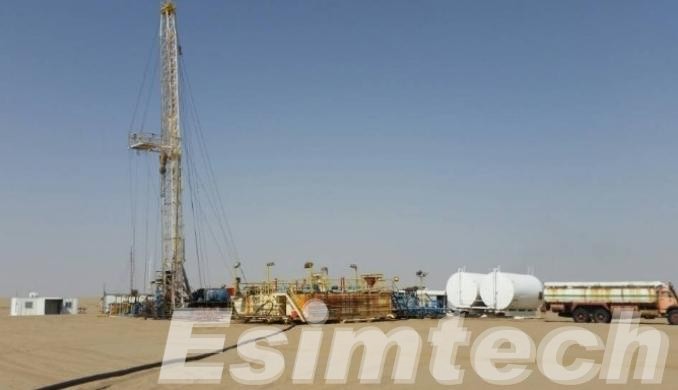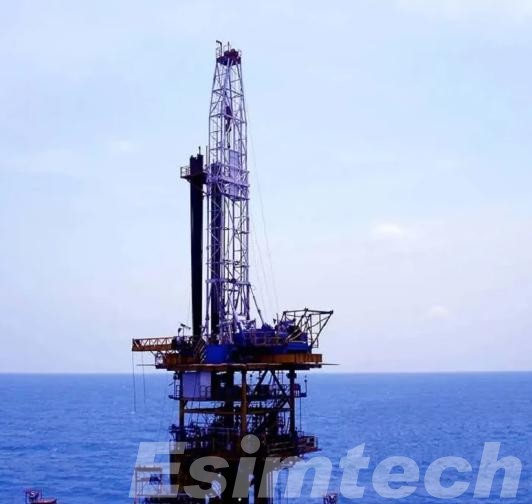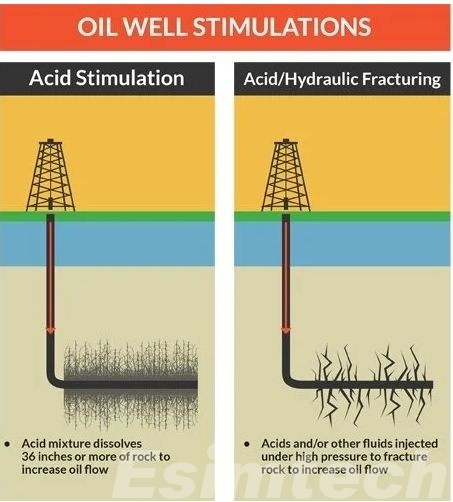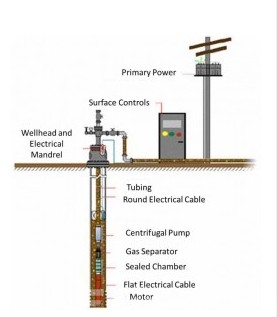Well Workover in Offshore vs. Onshore Environments: Challenges and Difference
The well workover process can be vastly different depending on whether it is conducted in an onshore or offshore environment. Understanding these differences is crucial for industry professionals to optimize their strategies and overcome the unique challenges each setting presents. This article talks about the nuances of onshore and offshore well workover, highlighting key differences and techniques used in both environments.
Onshore and Offshore Well Workover
Well workover operations share the common goal of enhancing well productivity and extending the well’s life, regardless of whether they are onshore or offshore. However, the methodologies and challenges differ considerably between these environments.
Onshore Well Workover

Onshore well workovers are generally more straightforward and less logistically complex than offshore operations. The well sites are accessible via established road networks, making transportation of equipment, materials, and personnel relatively simple and cost-effective. Onshore workovers benefit from stable and predictable working conditions, with fewer weather-related disruptions and less environmental wear and tear on equipment.
The ease of access and lower logistical complexity of onshore workovers result in significant cost savings. These operations can be conducted more frequently and with a broader range of techniques, including mechanical repairs and advanced enhanced oil recovery (EOR) methods. Additionally, regular monitoring and maintenance are more feasible, contributing to efficient and effective well management.
Offshore Well Workover

Offshore well workovers, in contrast, involve complex and meticulously planned operations due to the remote and challenging marine environment. Accessing offshore wells requires extensive logistical coordination, utilizing helicopters, supply boats, and specialized rigs. These rigs must be equipped to handle the dynamic and harsh conditions at sea, including high winds, rough seas, and corrosive saltwater.
The environmental conditions offshore necessitate the use of specialized equipment and materials that can withstand the marine environment. Safety is a major concern, given the isolation of offshore operations and the potential for severe weather. Emergency response plans must be robust and comprehensive, as access to medical facilities and emergency services is limited compared to onshore locations.
Key Differences Between Offshore and Onshore Workovers
Here’s a table summarizing the key differences between onshore and offshore well workovers:
| Factor | Onshore Well Workover | Offshore Well Workover |
| Work Platform | Mobile drilling rigs | Jack-up rigs, semisubmersibles, drill ships |
| Equipment | Conventional drilling equipment | Specialized equipment for remote operation and harsh marine conditions (ROVs, etc.) |
| Logistics & Support | Equipment transported by road | Complex logistics involving specialized vessels and limited onshore support |
| Environmental Considerations | Land & air quality protection | Stricter regulations to minimize oil spills & marine ecosystem damage |
| Safety | Preventing slips, trips, falls, equipment malfunctions | Additional measures for rough seas, strong winds, and offshore platform evacuation |
| Cost | Typically lower due to simpler logistics and readily available resources | Higher cost due to specialized equipment, vessels, and remote location |
Well Workover Techniques
Well workover operations encompass a variety of techniques employed to address specific wellbore challenges and enhance production. While the core goals remain consistent across onshore and offshore environments, the chosen techniques may differ based on the unique accessibility and logistical constraints of each location. Let’s explore some key well workover techniques and how their application might vary between onshore and offshore settings:
- Debris Removal
The accumulation of debris like scale, paraffin, or sand deposits within the wellbore can significantly hinder production flow. Both onshore and offshore workovers utilize similar techniques for debris removal, such as:
- Mechanical Cleaning: Deploying tools like milling tools or scrapers to physically remove debris from the wellbore.
- Chemical Cleaning: Injecting specialized chemicals to dissolve or break down deposits, followed by flushing them out of the well.
- Hot Oiling: Using heated oil to melt and mobilize paraffin deposits for easier removal.
However, offshore operations might favor the use of coiled tubing units for debris removal due to their ability to be spooled onto reels and deployed from offshore platforms with limited space.
- Stimulation

When wellbore permeability – the ability of the rock formation to allow fluids to flow – diminishes, well stimulation techniques are employed to improve production rates. Common techniques include:
- Hydraulic Fracturing (Fracking): Injecting a high-pressure fluid mixture at high rates to create or widen fractures in the rock formation, enhancing oil and gas flow. This technique is more commonly used in onshore workovers due to the complex logistics and environmental considerations associated with offshore fracking.
- Acidizing: Pumping acidic fluids into the wellbore to dissolve carbonate deposits blocking pore spaces and improving permeability. Both onshore and offshore operations utilize acidizing techniques, but offshore operations may require specialized pumping systems and careful management of spent acid to minimize environmental impact.
- Nitrogen Lift: Injecting nitrogen gas into the wellbore to lighten the fluid column and facilitate oil and gas flow. This technique finds application in both onshore and offshore environments.
- Repair
Addressing wellbore integrity issues like leaks or damaged casings is crucial for safe and efficient production. Techniques used in both onshore and offshore repairs include:
- Patching: Deploying patches or liners to seal leaks or damaged sections of casing.
- Cementing: Injecting cement slurry to strengthen and stabilize the wellbore.
- Wellbore Recompletion: Replacing damaged completion components like production tubing or packers. Offshore operations might require the use of remotely operated vehicles (ROVs) for underwater repairs, adding another layer of complexity and potentially higher costs.
- Artificial Lift Installation
When natural reservoir pressure is insufficient to bring oil and gas to the surface efficiently, artificial lift systems are installed. Common methods include:
- Gas Lift: Injecting compressed gas into the wellbore to lighten the fluid column and enhance production flow. Both onshore and offshore operations utilize gas lift systems.
- Rod Pumps: Using a string of rods connected to a surface pumping unit to mechanically lift fluids from the wellbore. Onshore well sites often favor rod pumps due to their simpler surface infrastructure requirements. Offshore operations might opt for electrical submersible pumps (ESPs) placed downhole for space limitations on platforms.

The specific well workover techniques chosen will depend on a thorough evaluation of the well’s unique needs, the nature of the production challenges, and the logistical constraints imposed by the onshore or offshore environment. By selecting the most appropriate techniques and implementing them with meticulous planning and safety protocols, operators can ensure successful well workover operations and maximize oil and gas production, regardless of location.
Conclusion
The differences between onshore and offshore well workover operations are significant, and influenced by factors such as accessibility, environmental conditions, cost, and safety. While both environments aim to maximize well productivity and longevity, their approaches and techniques vary greatly. Understanding these differences and the specific challenges each environment presents is important for successful well workover operations. As technology continues to advance, we can expect ongoing improvements in efficiency, safety, and cost-effectiveness in both onshore and offshore workovers.
